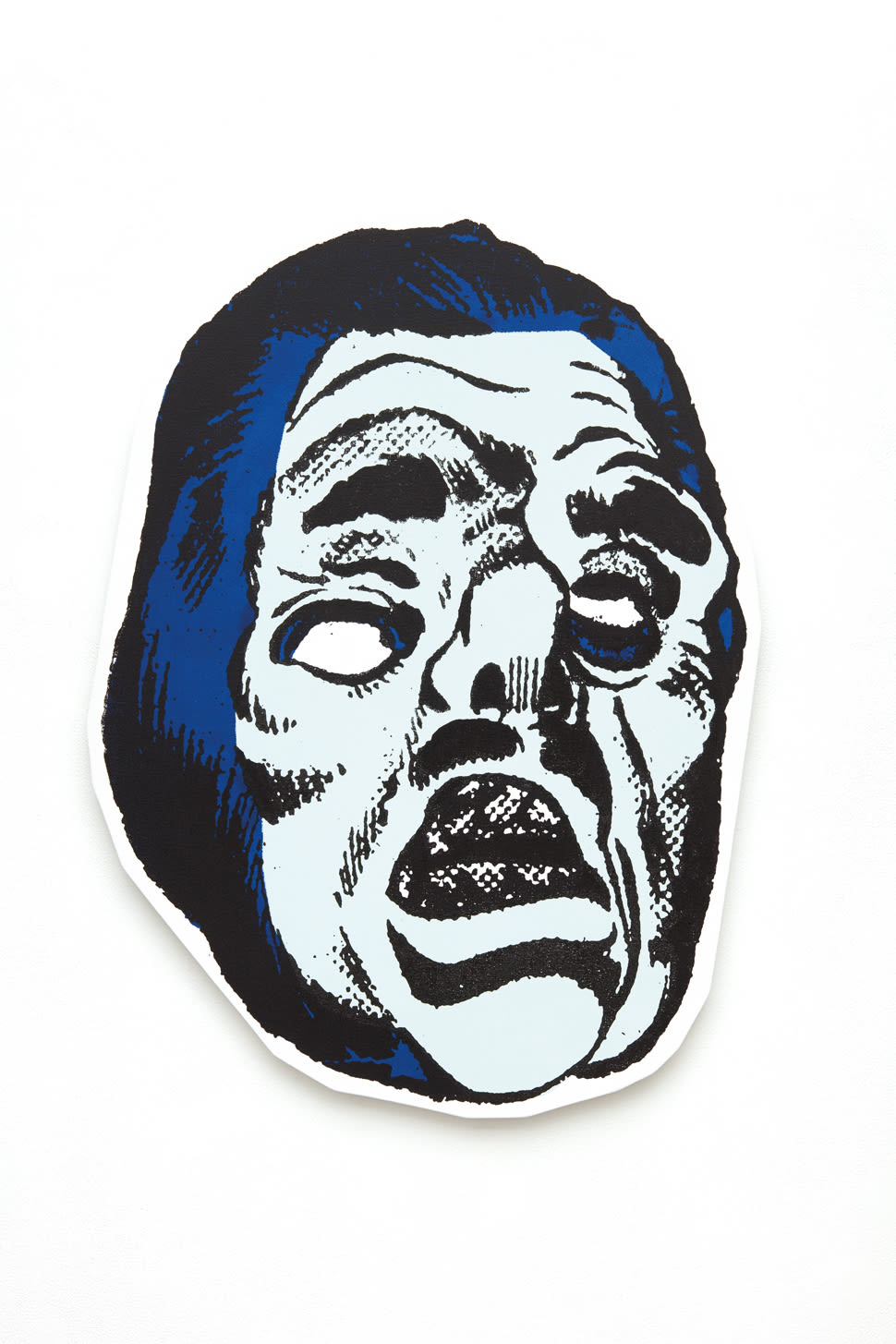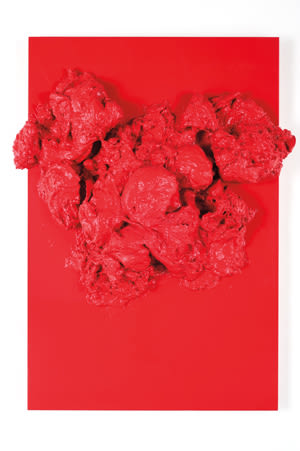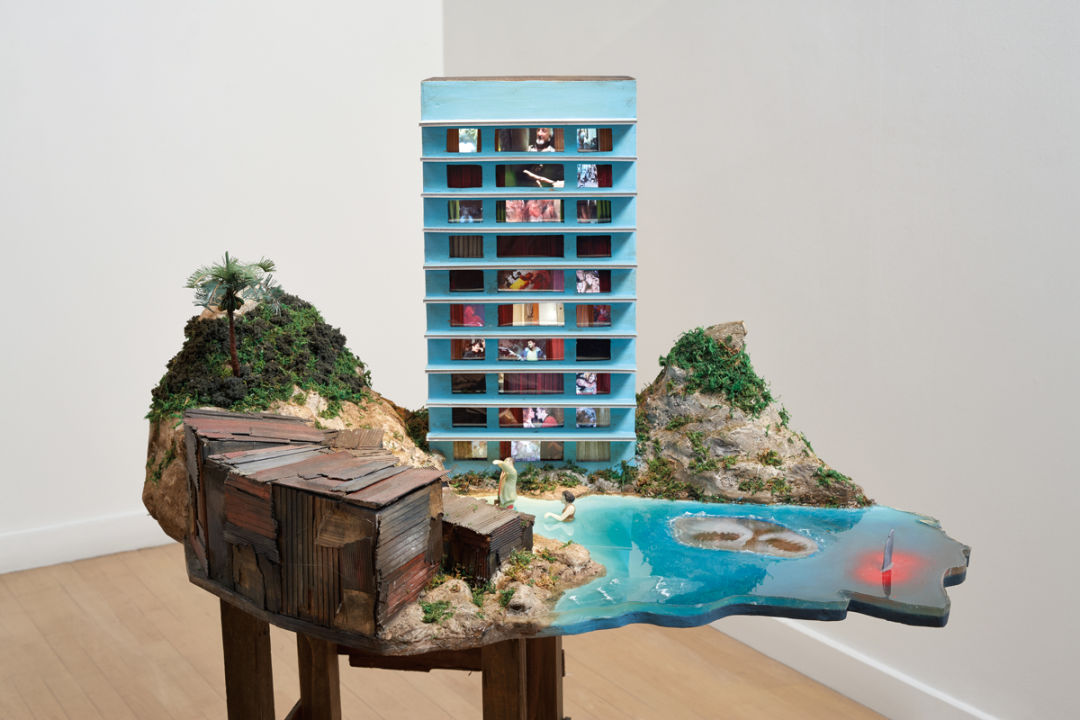Winter of the Living Dead at the Aspen Art Museum

Will Boone, Backslider Mask, 2018
Image: Courtesy Image
The zombie apocalypse is upon us, Aspen.
These brain-munching, moaning mainstays of popular culture will take over all three lower-level galleries of the Aspen Art Museum this winter, in a massive exhibition of some 40 works of art.
Well, not all of the works are overtly about zombies. Some just look like zombies or zombie-eaten brains, or they offer advice that would be useful in the event that the undead arise to eat us.
“I think it’ll be fun and funny and popular,” says museum director Heidi Zuckerman, who curated the show, “and it has a philosophical punch to it as well.”

Piotr Uklański, Untitled (Rigor Mortis), 2012
Image: Courtesy Image
Inspiration for the exhibition—titled Zombies: Pay Attention! (Dec 21–May 5 )—came from Max Brooks’s best-selling 2003 book, The Zombie Survival Guide. Brooks’s rules for how to weather the zombie apocalypse led Zuckerman to think about text-based art that would reflect his advice. So she’s included Rashid Johnson’s Run, which features the word in neon script, and a Bruce Nauman piece that has “Pay Attention Mother Fuckers” printed in reverse, and Christopher Wool’s Apocalypse Now, which reads “Sell the House Sell the Car Sell the Kids” in spray-paint stencil. Plus, on-topic movies and television shows will be screened throughout the exhibit’s five-month run.
Zuckerman also loaded up the exhibit with historical and contemporary works featuring zombies or people who could be, like Will Boone’s Backslider Mask, a painting of a deformed face; Huma Bhabha’s untitled painting of an eerie figure looming over rubble; and more literal takes like Tracey Snelling’s multimedia sculpture Zombie Island.
Actor Timothy Olyphant, star of the satirical Netflix series Santa Clarita Diet and a Zuckerman friend, also helped spark the exhibition. Discussing his role in the yuppies-as-zombies show got her thinking about why we’re drawn to these murderous creatures. “It’s interesting how many people have a secret love of zombies, so I started digging deeper into that,” Zuckerman says.
Of course, a zombie movie is never really about zombies. These monsters have long been metaphors for our social anxieties, going back to the parable of racial injustice in George A. Romero’s 1968 foundational flick, Night of the Living Dead.
In our current zombie golden age—led by Brooks’s novels, TV shows like The Walking Dead and video game franchises like Resident Evil—they’ve been read as stand-ins for everything from the mounting national debt or smartphone addiction to overpopulation or plastic pollution.

Tracey Snelling, Zombie Island, 2013
Image: Courtesy Image
As she started curating the show, Zuckerman noticed “zombie apocalypse” references to things as banal as not being able to keep up with e-mails and as existentially serious as fears around global warming and collapsing democracies.
Surprising as it might sound, the exhibition, for her, is a call to action for society during a fearful moment in history when that fear often results in inaction. “The idea of being unawake, or in this state where you’re alive but not living, is akin to what happens in a zombie apocalypse,” she says. “This show is about that and trying to get people to wake up.”
Additional winter exhibitions at the Aspen Art Museum
Lost Without Your Rhythm. A group show curated around the themes of dance and bodily movement that includes the interactive EJ Hill works Black Joy, a functional playground-style swing, and Midnight Summit, a structure that viewers can ascend on wooden stairs. Nov 16–Feb 24
Margaret Kilgallen, that’s where the beauty is. The first posthumous museum exhibition for the Bay Area Mission School artist and printmaker, who died in 2001 at age 33. Jan 11–June 16
Nina Katchadourian, Twitchers and Cheaters. A video installation depicting birds of the Roaring Fork Valley, displayed in a unique exhibit space: five monitors along the museum’s three-story exterior staircase. Jan 11–June 16
Robert Montgomery, The City in Their Echo. A text-based installation in LED lights in the Roof Deck Sculpture Garden. Dec 21–May 19
Gabriel Rico. The Mexican sculptor and installation artist will create site-specific portraits of contemporary life, inspired by the architecture of the museum’s two ground-floor galleries. Apr 8–June 16













































